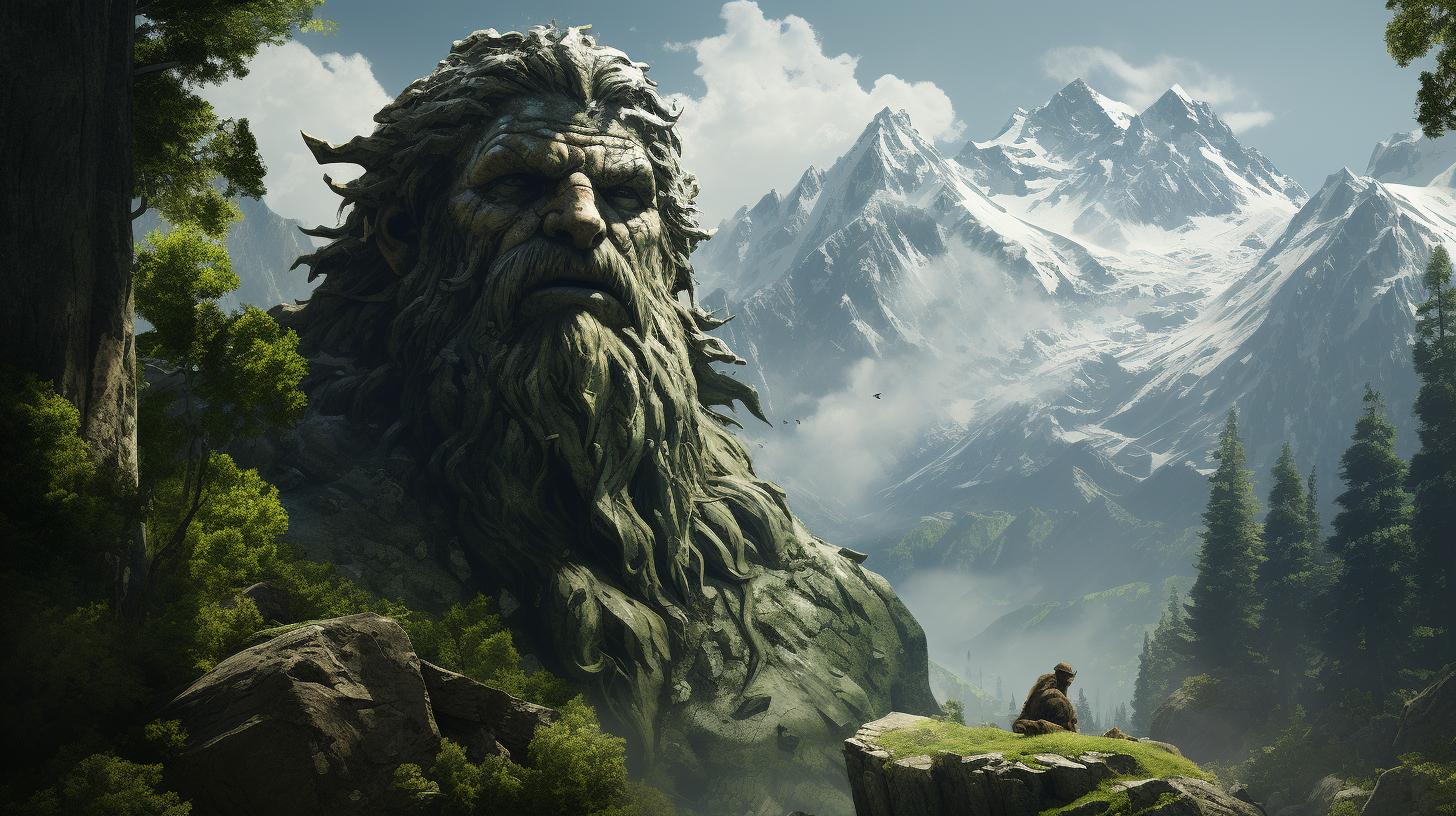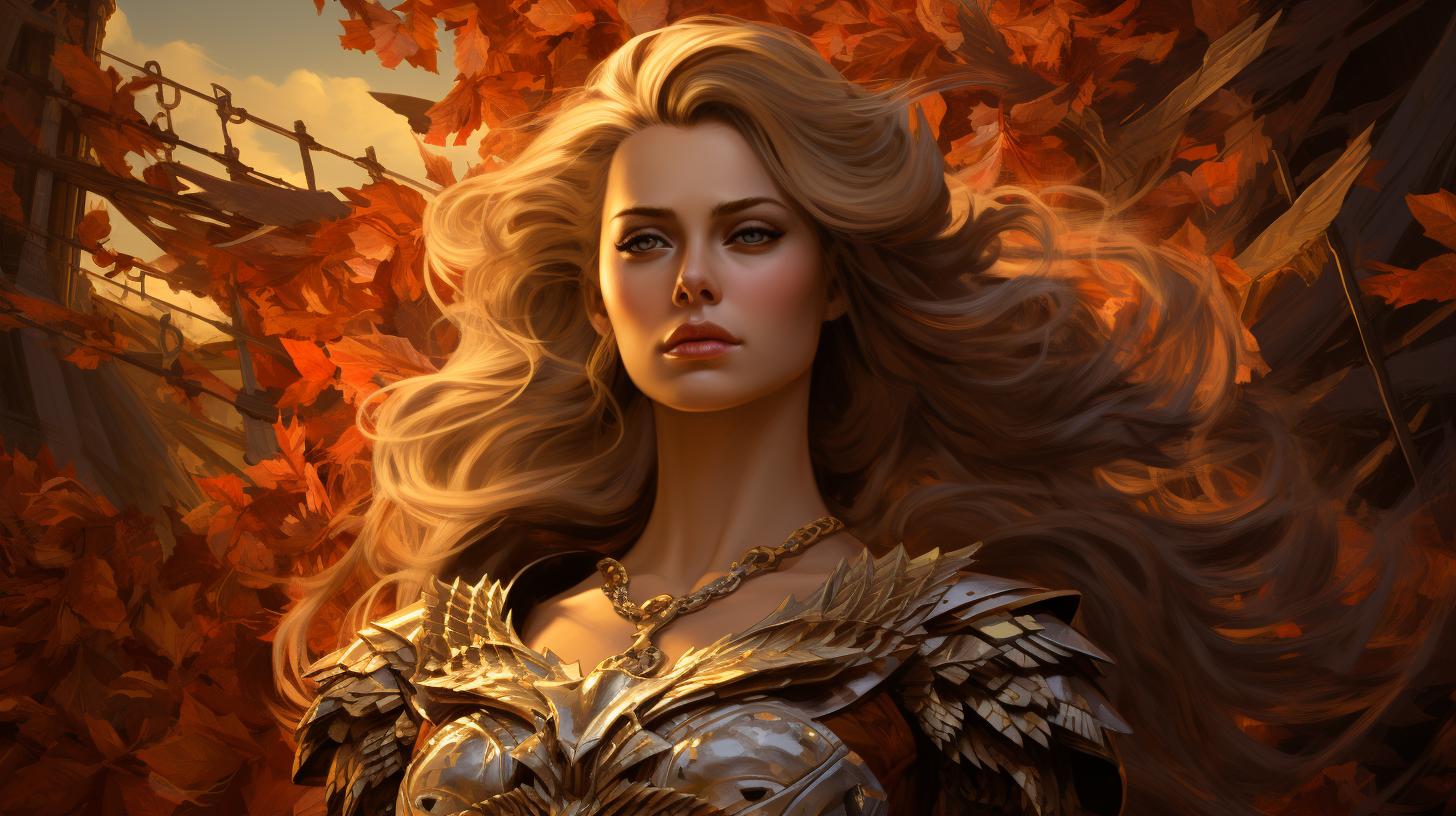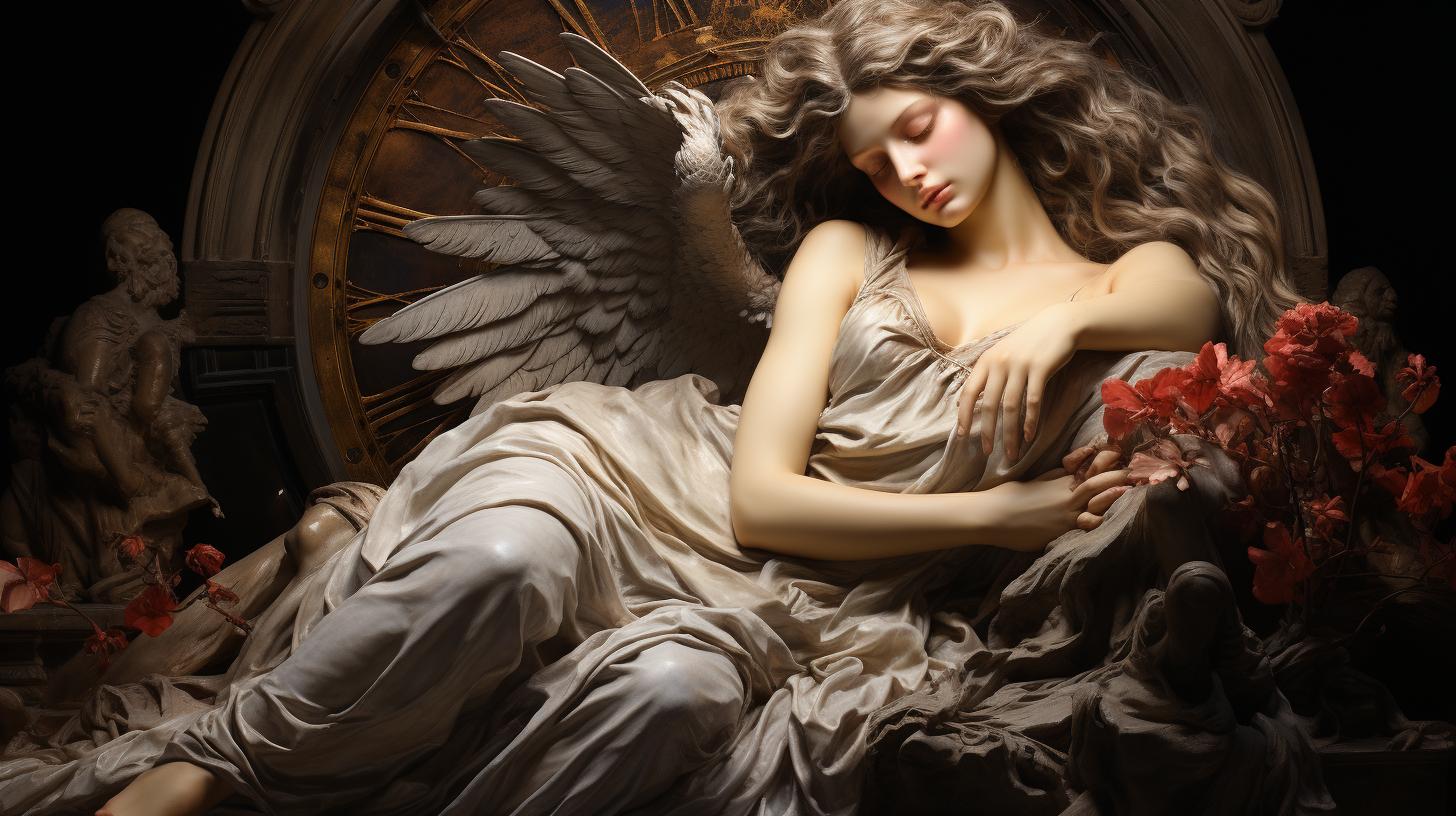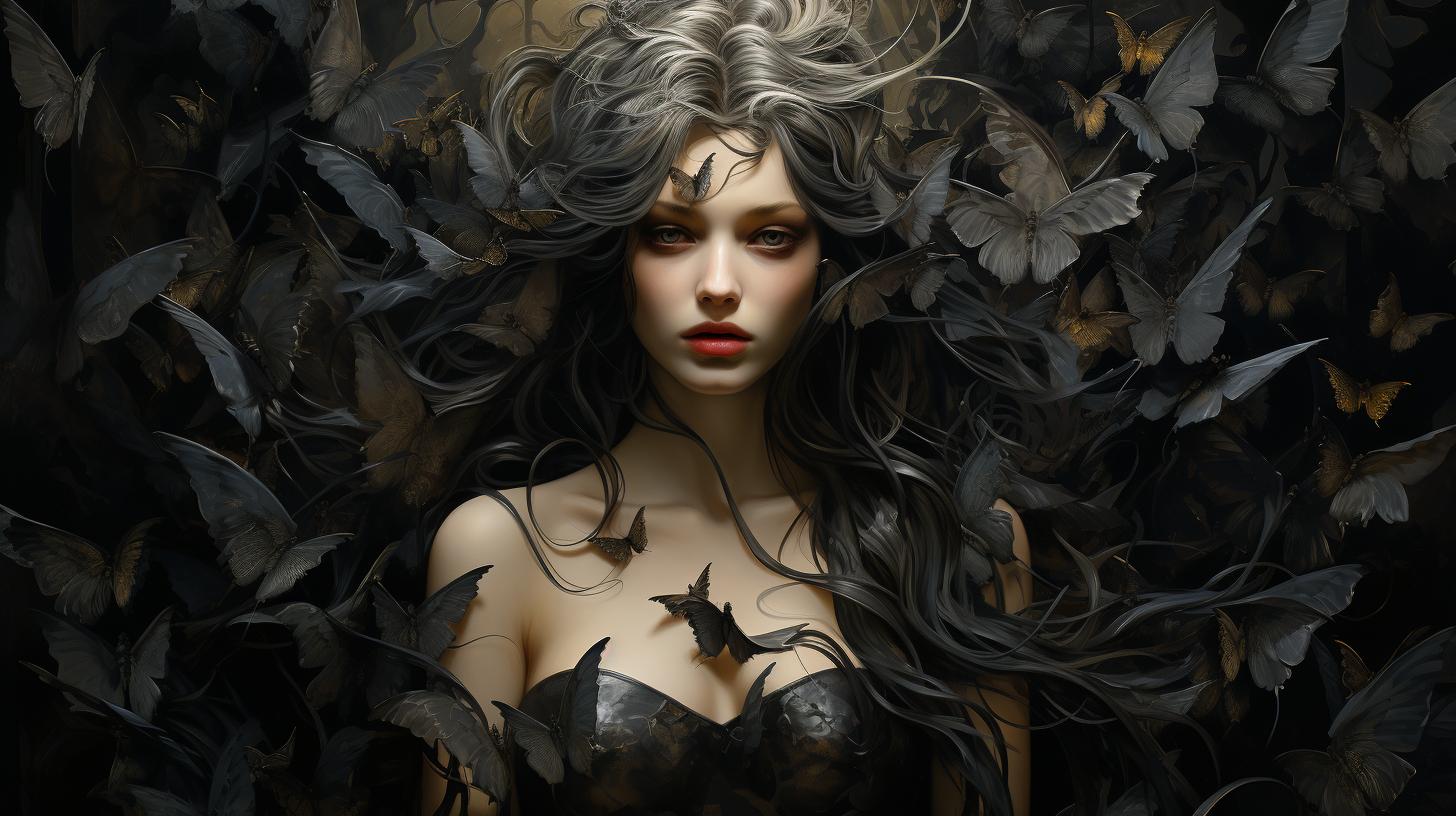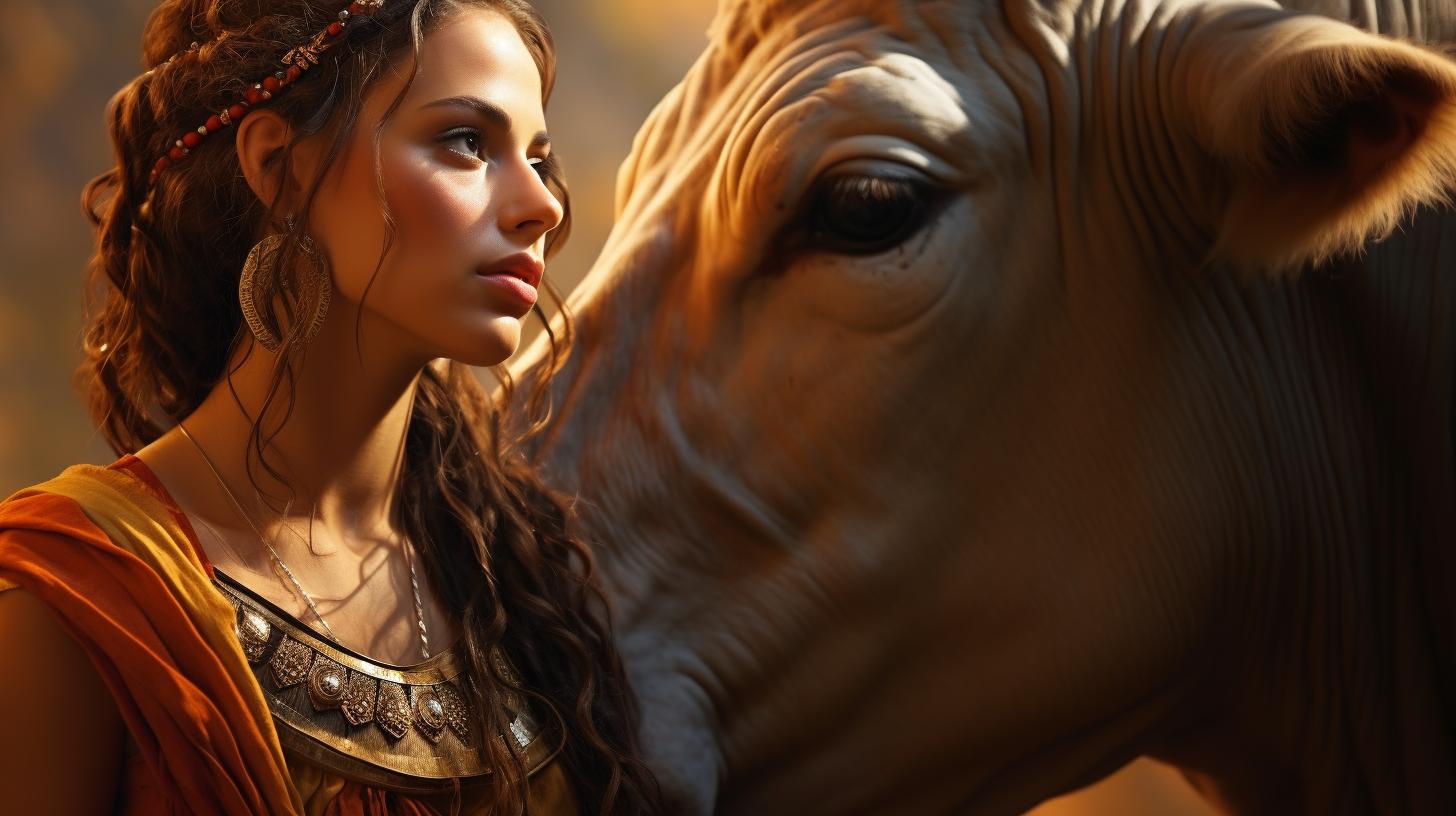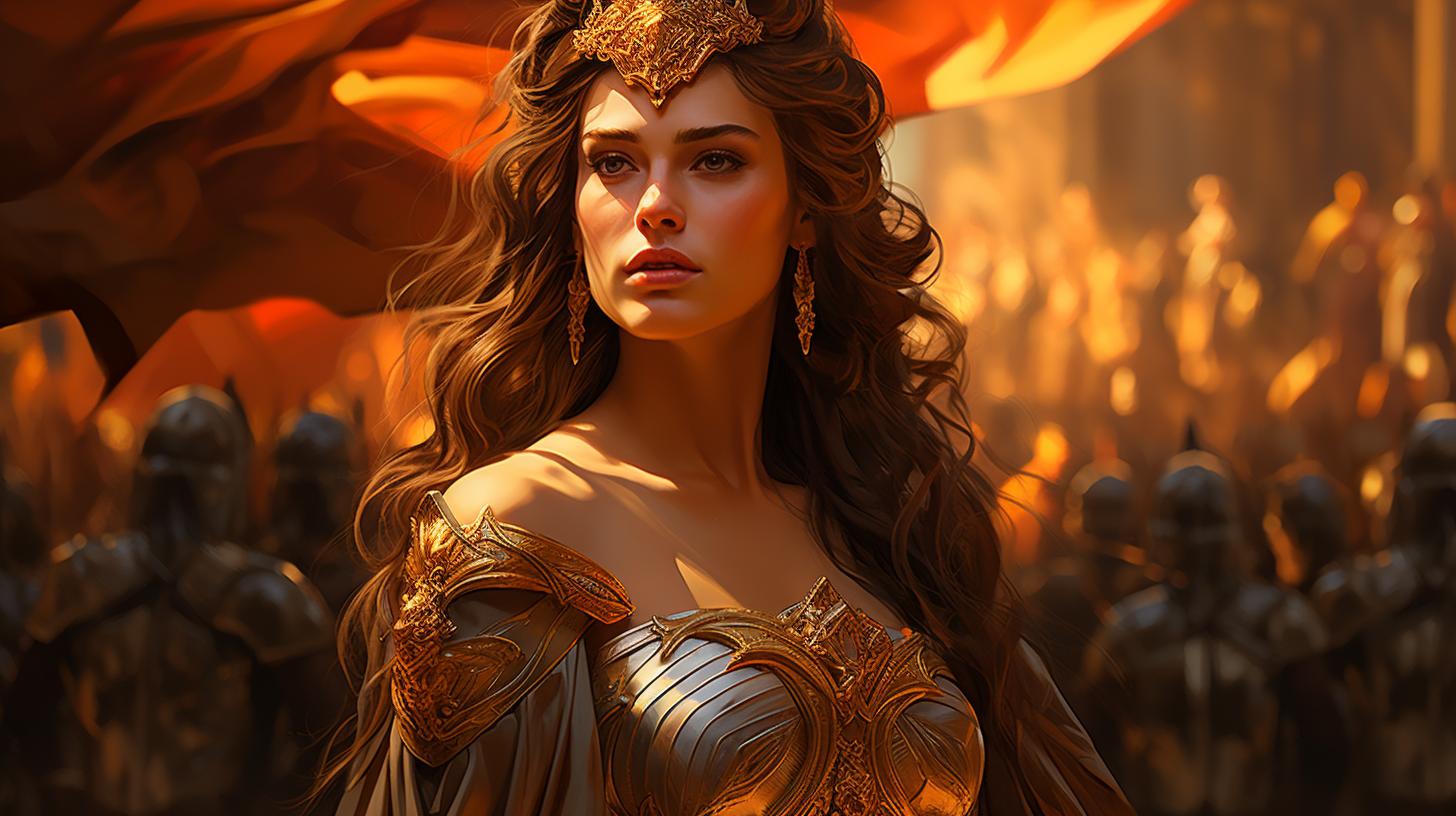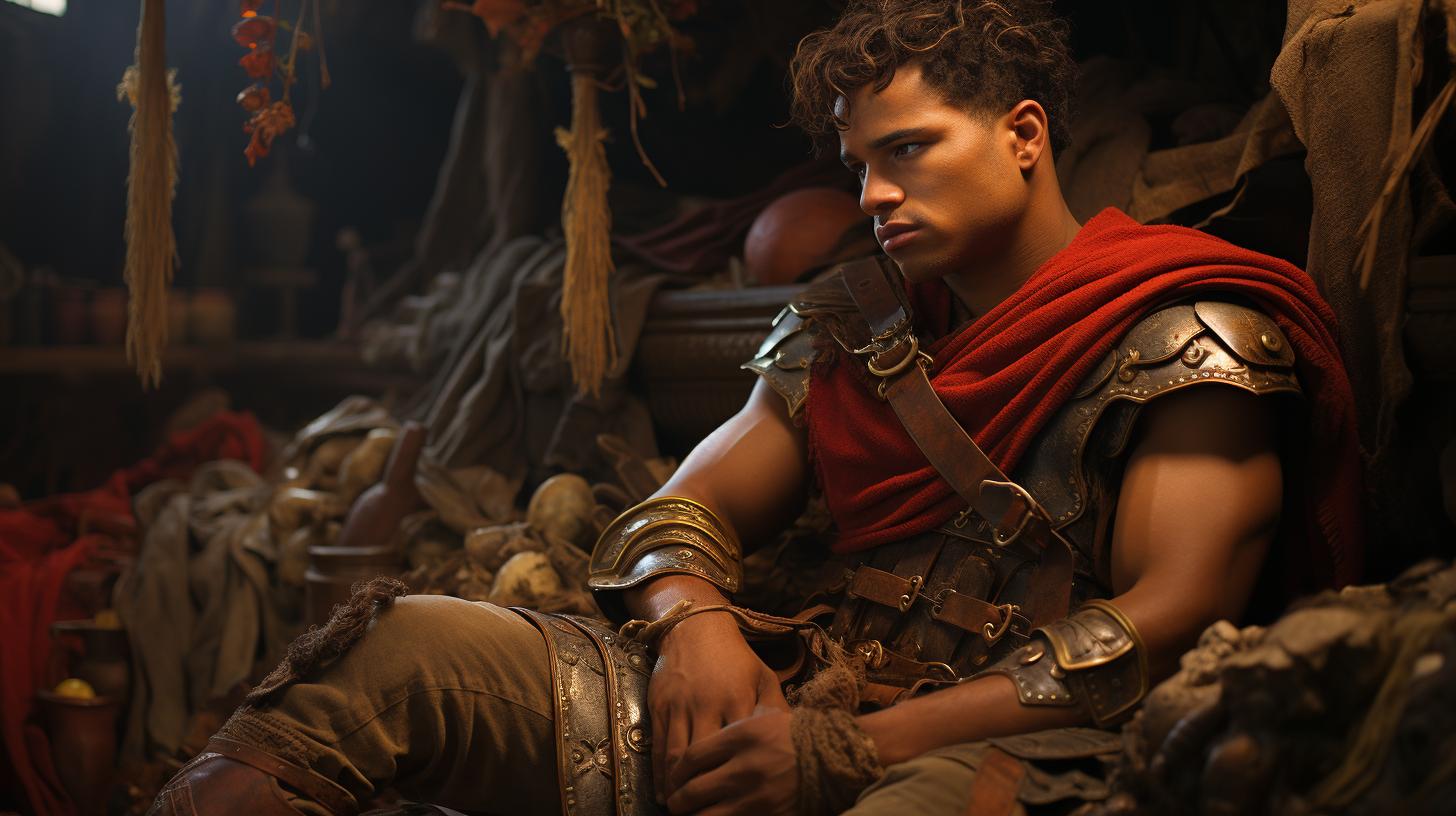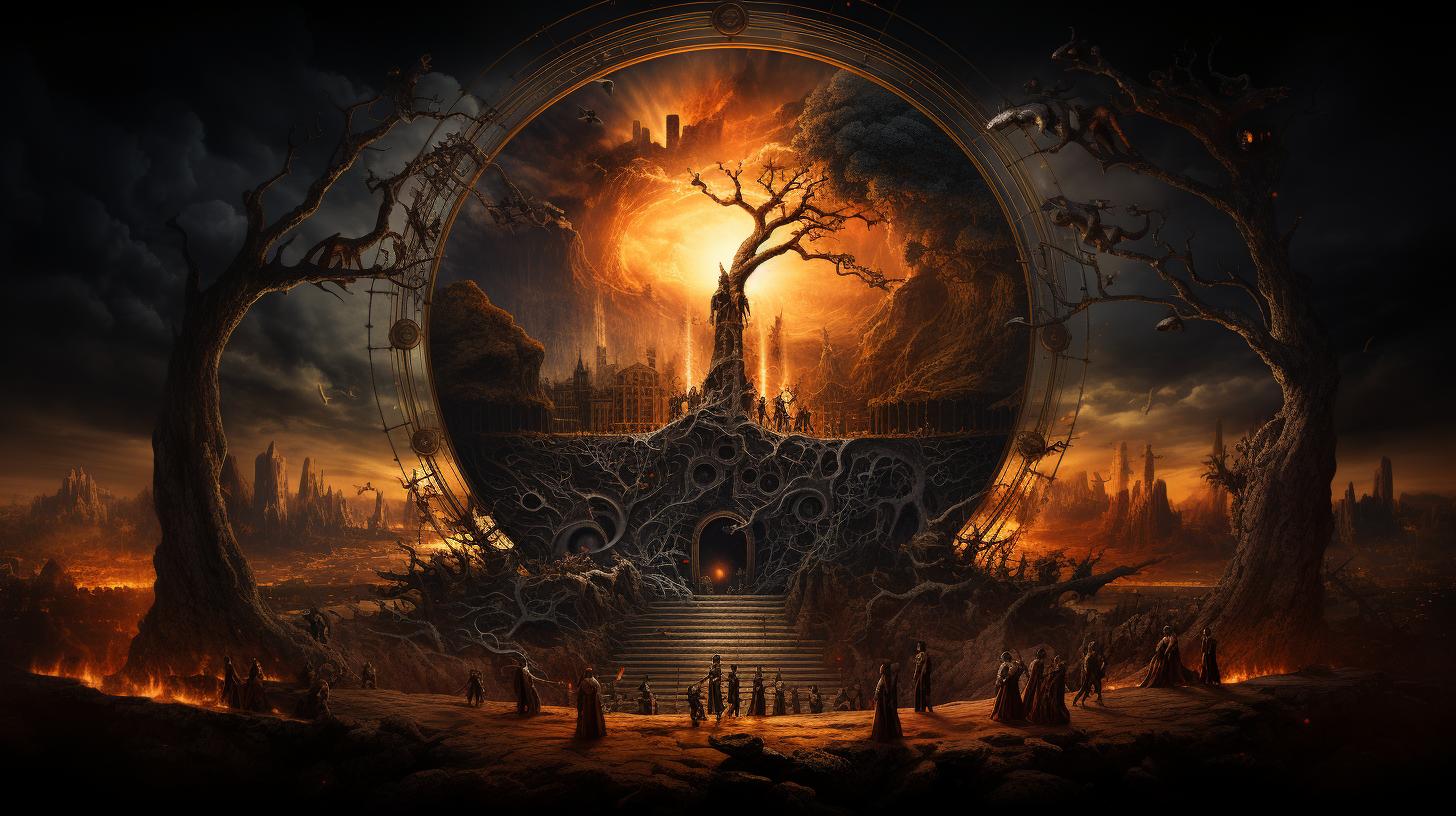‘Oreius Greek Mythology: The Forgotten God of the Mountains’

In Greek mythology, Oreius is a deity associated with the mountains and forests. He is believed to have ruled over the sacred Mount Otris or Oita in Malis, as well as the Pindus Mountain range.
Oreius is known as the father of Oxylos, representing the mountain woods, and Hamadryas, symbolizing the unity with trees. The descendants of Oreius include the Hamadryades nymphs, who are closely connected to specific trees.
Additionally, Oreius is mentioned in relation to the punishments and transformations of Agrios and their mother, Polifonte.
The Origins of Oreius: Mythological Background
In Greek mythology, Oreius is an intriguing deity whose origins are steeped in ancient legends and tales. Often mentioned in various contexts, Oreius is primarily known as the god of the mountains in central Greece.
His name is associated with mountains such as Mount Otris, Mount Oita in Malis, or possibly the Pindus Mountain range. These majestic peaks served as his sacred abode, where he exerted his influence over the forests and trees that adorned their slopes.
As a mountain god, Oreius possesses a deep connection to nature and is intimately linked to the realm of trees and woods. The bonds he forges with the natural world are exemplified in his divine offspring – Oxylos and Hamadryas.
Oxylos, whose name translates to “Mountain Forests,” symbolizes the distinctive vegetation that thrives in Oreius’ domain. Hamadryas, named after the Greek word for “Joined with Trees,” embodies the profound unity between Oreius and the forested landscape.
Oreius’ lineage extends further through his descendants, the Hamadryades nymphs. These ethereal beings are intimately tied to specific trees, each one guarding and personifying the essence of a particular species. Legends attribute the naming of certain trees to the nymphs.
For instance, a poetic account by Pherenicus suggests that the fig tree owes its name to Syke, the daughter of Oxylos and Hamadryas.
Delving into the mythical background of Oreius, his story intertwines with the tragic fate of Agrios, another prominent figure in Greek mythology.
Agrios and Oreius, depicted as powerful Thracian giants, were known for their cruelty and cannibalistic tendencies. Such heinous behavior earned them the wrath of the gods, resulting in a severe and consequential punishment.
As retribution, Agrios underwent a dreadful transformation, becoming a vulture – a creature detested by both humans and divine beings alike. This vile bird developed an insatiable appetite for human flesh and blood, forever burdened with a dark and foreboding presence.
On the other hand, Oreius met a different yet equally ominous fate. He was transformed into a royal owl, a creature known for its unsettling associations and unsettling symbolism.
The narrative doesn’t end with Agrios and Oreius, as their mother Polifonte also paid a steep price for their actions.
She, too, experienced a transformation, morphing into a diminutive screech owl whose haunting voice echoes through the night. This twofold punishment serves as a grim reminder of the consequences that befall those who transgress the divine order.
The origins of Oreius, interwoven with the complex tapestry of Greek mythology, reveal a deity intimately connected to mountains, forests, and their dwellers. His kinship with Oxylos and Hamadryas showcases his dominion over the mountainous woods, while his association with the Hamadryades nymphs emphasizes the profound relationship between nature and divinity.
Additionally, his bonds with Agrios and Polifonte illustrate the tragic consequences that follow cruelty and transgression in the realm of the gods.
Oreius as the Mountain God: Powers and Domain
Oreius, a prominent deity in Greek mythology, is revered as the god of the mountains, particularly in central Greece. He is associated with several sacred mountain ranges, including Mount Otris, Mount Oita in Malis, and possibly the Pindus Mountain range.
As the mountain god, Oreius wields immense power and dominion over the vast forests and towering trees that blanket these rocky landscapes.
One of the primary attributes attributed to Oreius is his authority over the wilderness and its untamed beauty.
It is believed that he commands the spirit of the woods, overseeing the flourishing ecosystems and ensuring the harmony between nature and mankind. His role as the protector of forests highlights his connection to the expansive landscapes, where he safeguards the lush vegetation, including the majestic trees and dense foliage.
Oreius’ influence spans beyond the physical realm of mountains and forests. This revered deity holds a significant place in the hearts and minds of the ancient Greeks, symbolizing the untamed power and rugged beauty of nature.
The mountains, with their imposing presence and awe-inspiring grandeur, serve as a testament to his divine essence.
Furthermore, Oreius’ domain encompasses the habitats of various mythical creatures and creatures of legend.
It is said that he is the father of Oxylos and Hamadryas, whose names reflect their close connection to the mountainous forests. Oxylos, whose name translates to ‘Mountain Forests,’ embodies the wilderness and everything it encompasses.
Hamadryas, meaning ‘Bound to Trees,’ highlights the bond between trees and their guardian nymphs, the Hamadryades.
The intertwining relationships between Oreius, Oxylos, Hamadryas, and the Hamadryades further emphasize the intricate link between the mountain god and the natural world.
Each Hamadryad is associated with a specific tree species, illustrating the profound connection between Oreius’ dominion and arboreal life. It is fascinating to note that many trees derived their names from these nymphs, a testament to Oreius’ lasting influence on the natural environment.
In conclusion, Oreius is a revered god in Greek mythology, embodying the majestic power and splendor of the mountains. As the deity of the mountains, he presides over the untamed wilderness, exerting control over the vast forests and the diverse flora and fauna within it.
His role as the guardian of the mountains signifies his connection to the natural world and his vital role in maintaining the delicate balance between humanity and nature.
The Descendants of Oreius: Oxylos and Hamadryas
In Greek mythology, Oreius, the god of the mountains, is not only revered for his dominion over the rugged peaks but also for his lineage as a father.
Oreius is known to have fathered two important figures in Greek mythology: Oxylos and Hamadryas.
Oxylos, whose name translates to “Mountain Forests,” is described as a child born from the union of Oreius and his sister, Hamadryas.
As the embodiment of mountain woodlands, Oxylos embodies the untamed beauty found within the dense forests that flourish under Oreius’ watchful gaze. The mention of Oxylos serves to highlight Oreius’ connection to the natural world and his role in fostering the growth and prosperity of the mountain forests.
Hamadryas, whose name signifies “United with Trees,” is another significant descendant of Oreius. As the daughter of Oreius and sister-turned-wife of Oxylos, Hamadryas represents the intimate bond between the nymphs and the trees they inhabit.
The Hamadryades, nymphs associated with specific trees, derive their name and identity from Hamadryas herself. Each Hamadryad is linked to a particular tree species, such as the walnut, oak, mulberry, poplar, and more, symbolizing the interconnectedness between nature and Oreius’ lineage.
The mythological tales of Oxylos and Hamadryas reflect the profound influence Oreius had on the flora and fauna found within his mountainous domain. These descendants testify to Oreius’ role as a deity closely tied to the natural world, ensuring the growth and protection of the forests and trees that flourished under his watch.
Hamadryades: Nymphs Associated with Trees
Hamadryades are an essential part of Greek mythology and play a significant role in the tales of Oreius. These nymphs are closely linked to specific trees, forming a deep bond and sharing a symbiotic relationship with them.
Each Hamadryad is assigned to a particular tree and derives her life force from it. They are born when the tree comes into existence and live as long as the tree remains alive.
If the tree dies, the Hamadryad connected to it also perishes.
The Hamadryades are not merely guardians of the trees but are also responsible for their well-being. They are believed to possess a unique connection and understanding of the tree they are associated with, nurturing and protecting it throughout their existence.
- Karya (Walnut): Karya, the Hamadryad associated with walnuts, ensures the tree thrives and produces a bountiful harvest.
- Balanos (Oak Acorn): Balanos, the guardian of the oak tree, symbolizes strength and stability, preserving the grandeur of the ancient oaks.
- Kraneia (Cornel Cherry): Kraneia, connected to the cornel cherry tree, brings forth the beauty of the tree’s delicate flowers and vibrant red berries.
- Morea (Mulberry): Morea, the Hamadryad associated with mulberry trees, ensures the abundant growth of the tree’s sweet and juicy fruits.
- Aigeiros (Poplar): Aigeiros is the guardian of the poplar tree, symbolizing grace and resilience, with its leaves fluttering in the wind.
- Ptelea (Elm): Ptelea, connected to the majestic elm tree, maintains the vitality and graceful allure of its branches and leaves.
- Ampelos (Vine): Ampelos, the Hamadryad associated with the vine, oversees the growth and cultivation of the grapes, ensuring a plentiful harvest.
- Syke (Fig): Syke, the guardian of the fig tree, embodies abundance and nurtures the growth of the tree’s delicious and sweet fruits.
These Hamadryades are not merely nymphs tied to the existence of their specific trees but are integral to the balance of nature and the flourishing of vegetation.
Their presence in the mythological tales involving Oreius emphasizes the significance of the divine bond between trees and the natural world.
Exploring the stories and symbolism surrounding Hamadryades grants us a deeper understanding of the mythology and the intricate relationships between various aspects of nature within the Greek pantheon.
The Connection Between Oreius and Callisto in Greek Mythology
In Greek mythology, Oreius is intriguingly connected to the story of Callisto, a nymph and companion of the goddess Artemis. Callisto was known for her exceptional beauty and vowed to remain a virgin in service to Artemis. However, her fate took a dramatic turn when she caught the eye of Zeus, the king of the gods.
Zeus, lured by Callisto’s beauty, disguised himself as Artemis and approached her in the forest. Consumed by desire, Zeus seduced Callisto, violating her vow of chastity. This union resulted in Callisto becoming pregnant with a son named Arcas.
Upon discovering Callisto’s pregnancy, Artemis, who valued purity and chastity, was enraged. She banished Callisto from her presence, casting her out of her group of loyal nymphs. Left alone and devastated, Callisto was left to wander in isolation.
Eventually, the wrath of Hera, Zeus’ jealous wife, caught up with Callisto. Hera, furious with Zeus’ infidelity, transformed Callisto into a bear, forever sealing her fate as a victim of jealousy and betrayal.
As a bear, Callisto roamed the forests, never able to regain her human form or reunite with her son.
Oreius comes into this narrative in a fascinating way. As a mountain god associated with forests and trees, Oreius played a significant role in the life of Callisto as she traversed the wilderness as a bear.
It is said that Oreius felt pity for Callisto and bestowed his protection upon her during her time in the forests and mountains.
Despite her transformation, Callisto’s connection with Oreius remained strong.
The mountains became her sanctuary, offering her shelter and a sense of belonging amidst her challenges. Oreius’s presence served as a reminder of the intertwined nature of the divine and natural world, where even in her altered form, Callisto found solace in the embrace of the mountain god.
The story of Callisto and her relationship with Oreius embodies themes of transformation, resilience, and the enduring power of nature. It serves as a reminder that in Greek mythology, the gods and the natural world are intricately intertwined, shaping and influencing the lives and destinies of mortals.
The Transformations of Oreius and Agrios: Punishment and Symbolism
In Greek mythology, the stories of Oreius and Agrios are intertwined with themes of punishment and symbolism. These two characters, previously known as mountain gods from Tracia, faced a cruel fate due to their deplorable actions.
As a consequence of their cannibalism and malevolence, they were subjected to transformation as a form of divine punishment.
Agrios, depicted as a fearsome giant, was transformed into a dreaded vulture, despised by both gods and mortals.
This creature had an insatiable appetite for human flesh and blood, perpetually driven by an intense attraction to carnage. The sight of this bird foretold ominous events, representing the consequences of Agrios’ cannibalistic nature and serving as a reminder of the repercussions of his actions.
Oreius, on the other hand, faced a different but equally ominous transformation. He was metamorphosed into a royal owl, a bird associated with darkness and ill omens. The presence of this owl signified impending doom for anyone who encountered it.
The personification of Oreius as an owl served as a symbolic representation of the consequences that awaited those who engaged in wicked deeds.
- The cruel punishment inflicted upon these once mighty figures was not without reason.
It was a testament to the gods’ justice and a warning to those who deviated from virtue.
- Their transformations into birds not only stripped them of their former power but also served as a perpetual reminder of their transgressions.
- Additionally, the transformation of Polifonte, Oreius’ mother, into a small owl further emphasized the nature of their punishment, as the owl’s haunting voice echoed through the night.
The stories of Oreius and Agrios highlight the significance of accountability and the consequences of one’s actions within Greek mythology.
These transformations served as a reminder that no immoral act goes unpunished and that justice will prevail, even against formidable entities.
Polifonte’s Tragic Fate: The Transformation and Consequences
Polifonte, a central figure in Greek mythology, experienced a tragic fate that was closely tied to the divine punishment bestowed upon her and her children. Her actions and their subsequent consequences serve as a cautionary tale within the realm of Oreius Greek mythology.
Polifonte’s tragic story begins with her dishonorable actions towards the goddess Aphrodite. As a result of her disrespectful behavior, Aphrodite, filled with anger and indignation, orchestrated a series of events that would forever change Polifonte’s life.
Drawing upon her powers, Aphrodite caused Polifonte to fall madly in love with a bear, driving her to the brink of insanity.
Driven by an irresistible demonic force, Polifonte succumbed to her uncontrollable desires and engaged in a forbidden union with the bear.
Witnessing this abomination, the goddess Artemis, protector of the wild and all its creatures, turned the animal kingdom against Polifonte. Thus, Polifonte’s union with the bear led to the birth of Agrios and Oreius, two beings whose punishment would be as equally dreadful as their mother’s.
As the consequences of her actions began to unfold, Polifonte herself was transformed into a small owl, forever cursed to roam the night, her mournful cries a haunting reminder of her transgressions.
This transformation symbolized her fall from grace and her perpetual torment as a result of defying the gods.
But the tragedy did not end with Polifonte’s punishment alone. One of her loyal servants, a devoted maid, suffered a similar fate.
This faithful servant, who stood by Polifonte throughout her ill-fated journey, was ultimately transformed into a woodpecker. Forever condemned to dwell within the realm of trees, the woodpecker carries with it a reminder of the consequences that befall those who dare to challenge the divine order.
Polifonte’s transformative fate, along with the unfortunate destiny of her loyal servant, serves as a clear lesson in Greek mythology about the perils of disrespecting the gods and defying their will.
The story of Polifonte stands as a warning to all who dare to act against the divine order, as it proves that actions have consequences, and even the mightiest among mortals are subject to the punishment of the gods.
The Mythological Significance of Oreius and Agrios’ Bird Forms
In Greek mythology, the transformation of Oreius and Agrios into bird forms holds great mythological significance. These punishments were directly linked to their cruel and cannibalistic natures, symbolizing the consequences of such actions.
Let’s delve into the significance of their bird forms:
- Agrios as a Vulture: Agrios’ transformation into a detested vulture, the most repugnant bird to both gods and humans, signifies the vile nature of his deeds.
As a scavenging bird with an insatiable appetite for human flesh and blood, the vulture represents the gruesome consequences of his cannibalism and his eternal association with death and decay.
- Oreius as a Royal Owl: Oreius’ transformation into a royal owl carries its own ominous symbolism.
The owl has long been associated with darkness, mystery, and ill omens. Its haunting hoots at night are believed to portend misfortunes for those who hear them. This transformation serves as a warning to anyone who encounters Oreius, signifying the dangers of cruelty and the eternal vigilance that must be taken against malevolence.
The bird forms of Oreius and Agrios reflect their monstrous natures and their eternal punishment for their heinous acts.
These transformations emphasize the prevailing themes of justice, retribution, and the inescapable consequences that await those who commit acts of cruelty and wickedness.
.











